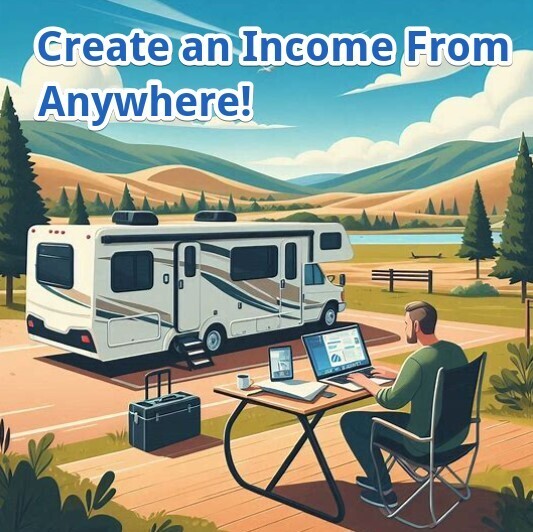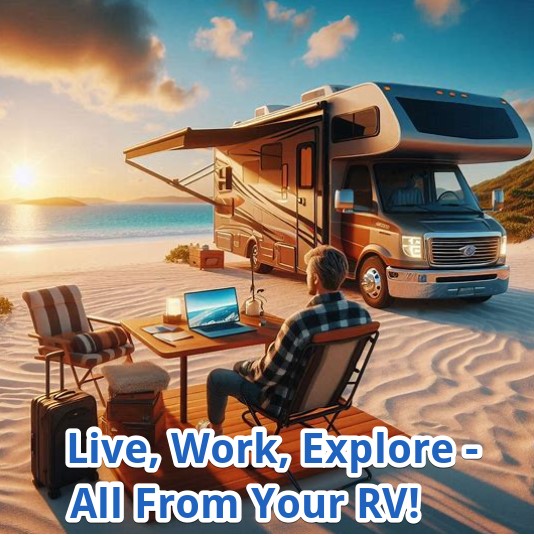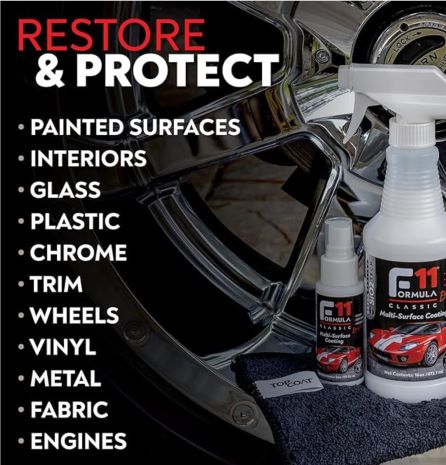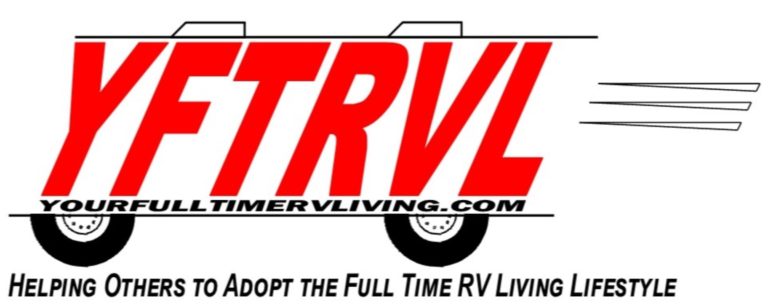RV solar power systems can completely change the way you hit the road. These systems use solar panels to convert sunlight into electricity, which is pretty neat when you want to keep your gadgets and appliances running without relying on noisy generators or hookups at crowded campsites.
Switching to solar has its perks. Not only does it make you more self-sufficient, but it’s also a green choice that reduces your carbon footprint. Freedom from the grid means more off-the-beaten-path adventures without having to worry about where the next power outlet is.
Now, it’s worth mentioning that RV solar power systems are a bit different from the typical ones you might see in a house. They’re specially designed to be portable, often lighter, and tailored for the specific needs of your home on wheels.
From Sunshine to Power
You’ll find a basic system usually includes solar panels, a solar controller, an inverter for converting solar energy, and batteries to store that sweet, free power.
A few common components make these systems tick. The solar panels soak up sunlight on the roof of your RV. Then there’s the charge controller, the unsung hero that ensures your batteries don’t overcharge.
The inverter comes in to convert that stored energy into a form you can actually use for your TV or Blender. Finally, the batteries are your stash for powering through those cloudy or night-time hours when the sun isn’t around to help.
Assessing Your RV’s Solar Power Needs
Before jumping into the world of RV solar power, it’s crucial to figure out exactly how much juice your home on wheels will need. It’s all about understanding your energy habits—everything from the number of gadgets you carry to how long you stay off-grid will play a role.
Think of it like planning your outfit for a long trip; you need the right pieces to keep everything comfortable and efficient.
Power use can vary significantly based on your lifestyle. If you’re someone who can’t do without the coffee maker or binge-watching your favorite series on the road, you’ll have higher energy demands compared to a minimalist traveler who enjoys the quiet of nature. Hot climate? You’ll probably want a power-thirsty AC hammering away during the day.
Solar Panels and Batteries
Choosing the solar panels of the right size is another puzzle piece. Too small, and you might find yourself missing out on creature comforts. Too large, and it’s like wearing a winter coat in the summer—unnecessary bulk. Manufacturers often provide baseline estimates based on average use, but considering personal habits offers a more accurate plan.
Battery capacity also becomes a key player in your planning. Batteries are not just for storing those sun-kissed watts; they define how long you can stay off-grid. Go for batteries that offer a balance between capacity and space.
You’ll thank yourself during a series of overcast days when everyone else is fretting about backup generators.
The Installation Process: Step-by-Step Guide
Proper preparation makes all the difference when installing your RV solar setup. Start by checking that your rig is ready for this upgrade. Ensure the roof can support solar panels and that there’s enough room. It’ll save time and possible headaches later.
The weight of all the components, solar panels, lithium batteries, and the rest of the electrical components, can add up to hundreds of pounds. This is an additional weight that will be added to the RV. Please consider your RV’s cargo-carrying capacity and include the additional weight of the solar system in the equation.
Once you’re set to begin, the step-by-step process kicks off with getting those solar panels onto the roof. It can sound daunting—after all, it’s your RV roof we’re talking about—but many RVers do it themselves. Mount the panels securely to avoid windy surprises down the road. Aim for a spot with minimal shading throughout the day for the best sunlight exposure.
Be sure not to create any leak points on the roof! You want to make sure all roof penetrations are properly sealed with a sealant that is appropriate for the roof material of your RV.
Wiring and Solar Panels
Wiring is where it really starts coming together. Safe practice should be the name of your game here to steer clear of shorts or damage. Most setups will connect panels through a charge controller to batteries and an inverter. Keep wire connections snug and tidy, which means less hassle if something goes south later on.
Now, about securing those panels—double-check that setup! In transit, your panels face wind, debris, and vibrating conditions. A loose panel isn’t just a risk to your energy; it’s a safety hazard.
Take extra care to secure everything with the right hardware and consider aerodynamic covers for added protection. This step ensures maximum sunlight exposure and longevity for your equipment.
Effective Maintenance and Troubleshooting
Keeping your RV solar system in tip-top shape isn’t all that much work, but it does require a regular checkup. Just like you’d maintain your engine, these panels and components need their own care routine.
A quick clean to remove dust and debris from the panels can go a long way in keeping efficiency high. A little bit of attention every now and then saves you bigger headaches down the road, trust me.
Simple troubleshooting can tackle quite a few common hiccups. If your battery isn’t holding a charge like it used to, it could mean it’s time for a replacement. Sometimes, wires can jiggle loose during those bumpy adventure rides—giving them a quick once over might reveal an easy fix.
If all panels aren’t generating power equally, there could be a problem with individual connections or shading issues.
Knowing when to call in the pros is vital. While it’s rewarding to DIY most things, some problems require an expert’s eye. In cases where troubleshooting isn’t solving the puzzle or you’re facing electrical concerns, don’t hesitate to bring in someone who’s seen it all before.
Upgrading system components can lead to better performance and longer lifespan. Technology strides forward fast; newer, more efficient parts can save you energy and make life easier in the long run.
Whether it’s a higher-capacity battery or more efficient panels, consider these upgrades for a future-proofed adventure.
Our Solar System
We have a newly installed solar system in our RV. It is a smaller system of three panels that can supply 300 watts of power to charge the Battle Born lithium batteries. We do not boondock for extended periods of time, so the system’s intent is to keep the batteries charging for 12-volt systems in the RV.
The only thing we would be lacking power for is the air conditioning system if needed. Instead of having more solar panels, more batteries, and electronics, which add more weight to the RV, a portable generator can meet that need.
Happy RV Solar Power Living!
To learn more about us, click here.
Please feel free to ask a question or leave a comment before you read other articles on our website.
Pam and I hope that while you enjoy the RV lifestyle, you also run an online business from your RV! We do!!
With great RV connectivity, as discussed on this website, you can easily make money while traveling to whatever destination you desire.
Would you like to create an income while enjoying RV travel? Is there something that you are passionate about? You can create an online business that you can run anywhere. I can help you do that!










Recent Comments